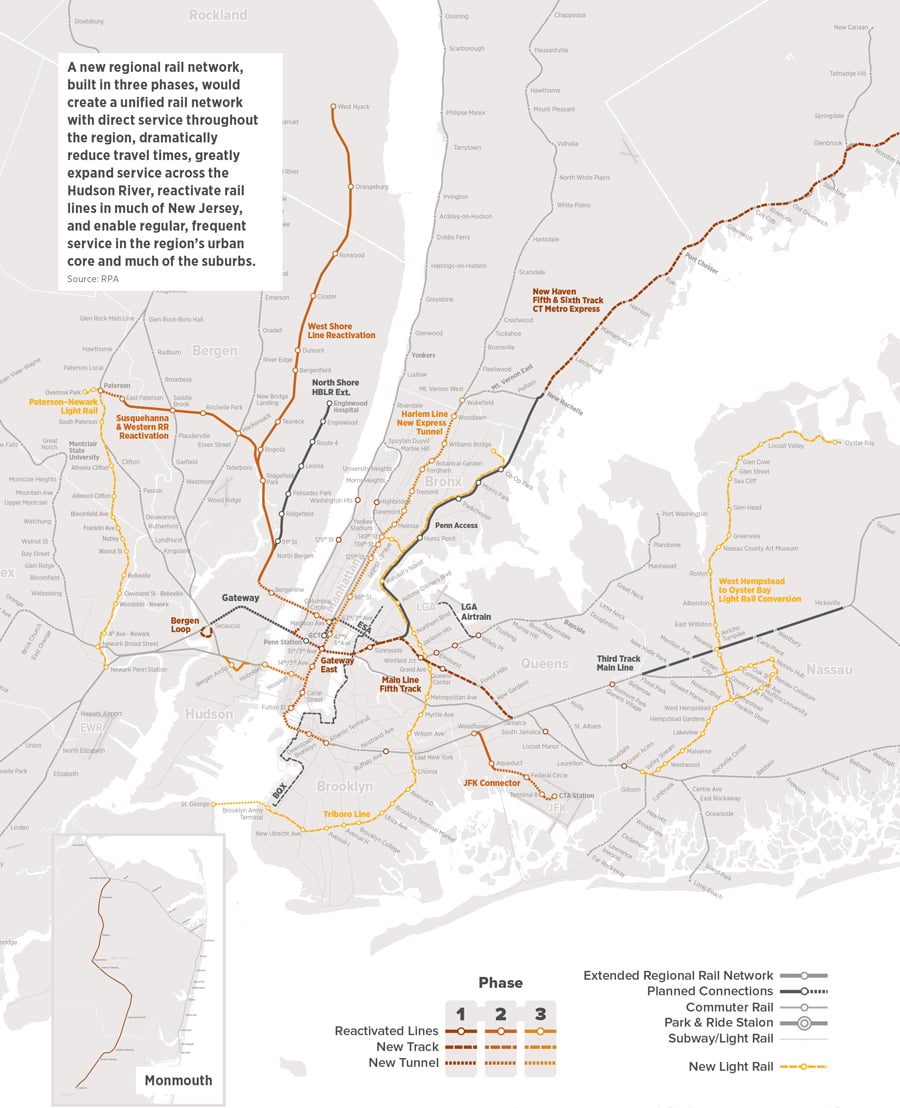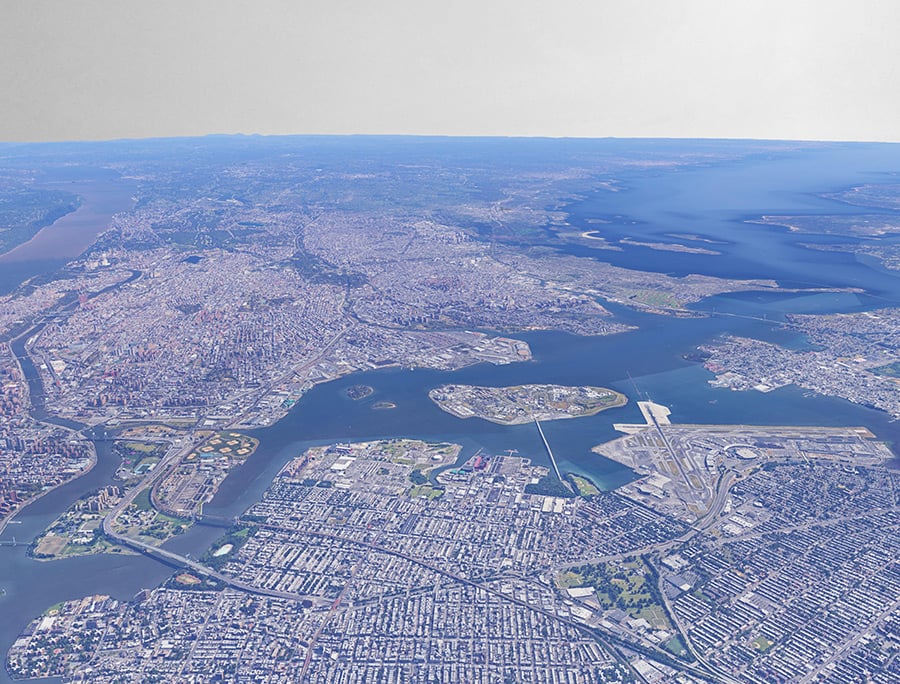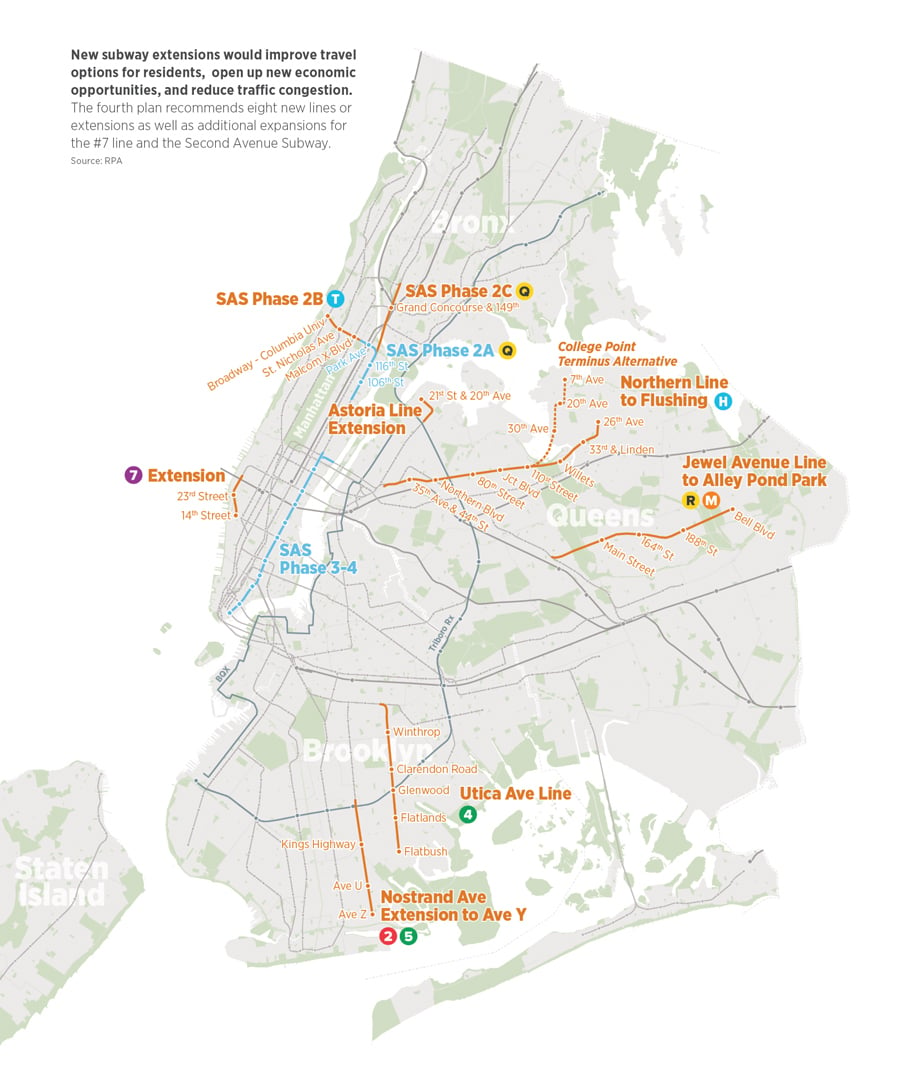
November 30, 2017
The RPA’s Fourth Regional Plan Charts New York City’s Future
The planning non-profit seeks to dramatically expand New York City’s transportation network while tackling affordability, driverless cars, and climate change, among other challenges.
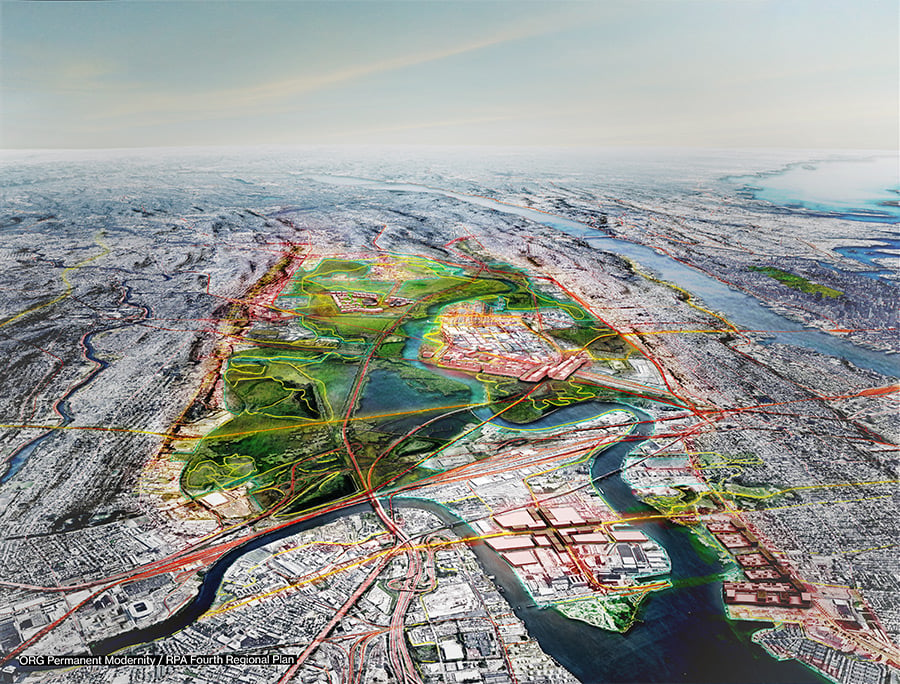
Any New Yorker will tell you the city’s transportation system can be an ordeal. Taking the subway sometimes feels gambling your $2.75 fare, hoping that everything works and you don’t lose minutes or hours. Instead of a customer-oriented transit approach, “pain threshold is our management system,” joked Regional Plan Association (RPA) President Tom Wright. But expanding that transportation network and enacting deep reforms to it are just two small facets of the RPA’s Fourth Regional Plan, a massive scheme that seeks to reshape how the New York metropolitan region functions and grows.
The RPA is a planning non-profit that has long influenced the tristate area. The organization’s large schemes (released in 1923, 1968, 1996, and now in 2017) have been its primary instruments of change. These plans are (for the most part) not intended for immediate implementation. Rather, they seek to generate discussion and plant ideas for future use. “We don’t make these plans to convince anyone currently in office,” said Wright at a press event. In many ways, New York City has been the victim of its own success, attracting 1.8 million new jobs and 3 million new residents from 1990 to 2015. With up to 3.7 million more residents living in the region by 2040, ensuring affordability is one of the plan’s critical goals. (No small task when, according to the RPA, the median income for the bottom 50% of the population hasn’t changed since 2000.) Add in an underfunded transportation system, climate change, and lagging infrastructure, and the challenges mount. In response, the RPA’s recommendations range from monumental projects to subtle technological solutions.
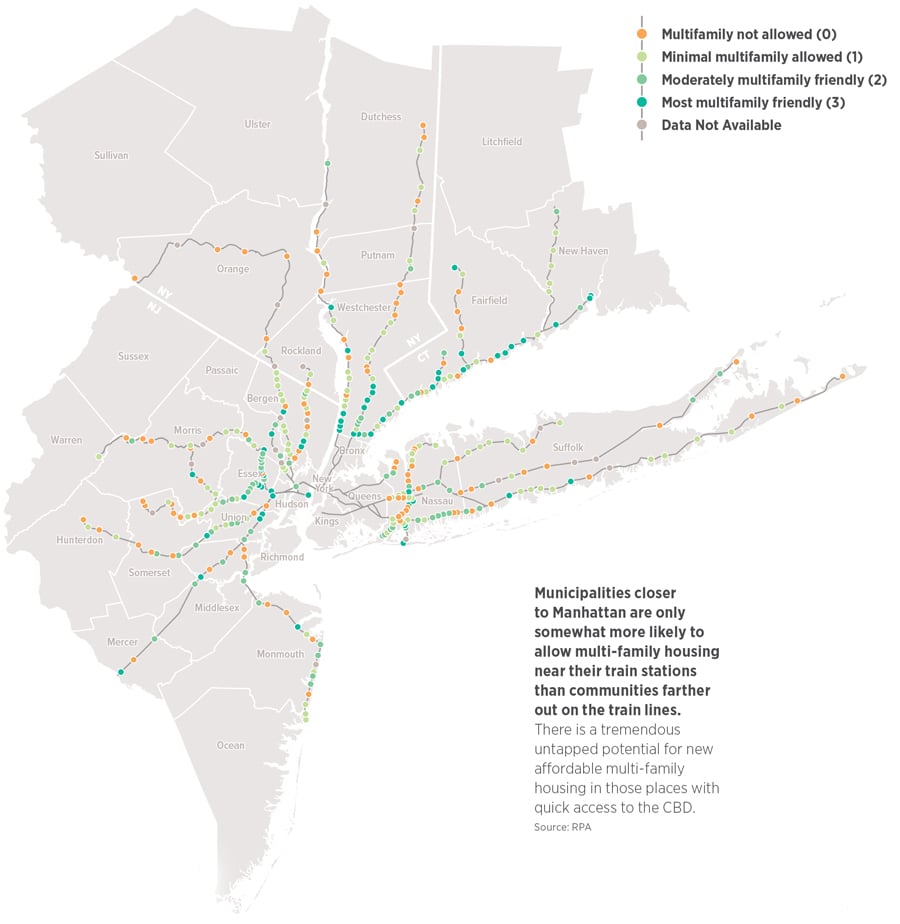
In terms of housing, the Fourth Regional Plan recommends a bulwark of legal actions and policies to protect communities from displacement while also rezoning land around regional train stations for mixed-use development. These moves would, in theory, protect existing affordable housing stock while opening desirable transit-connected land for growth. In terms of the transportation system, in the short term the RPA is asking that the MTA and Port Authority be restructured to remove political motivations from key decision-making processes. A newly-created and specially-empowered Subway Reconstruction Benefit Corporation would spearhead the modernization of the subway system during the next 15 years. Newark and JFK airports would need a revamp, especially given Teterboro Airport’s perilous elevation one foot above sea level—a situation would likely lead to massive flooding in the near future.
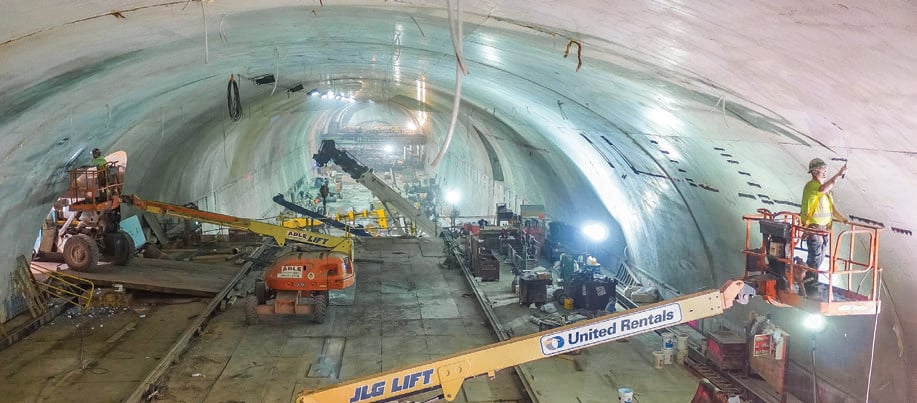
In the longer term, some transportation changes would be hyper-visible projects: a new Penn Station South, new rail tunnels under the Hudson and East Rivers, 31 new subway stations, and a greatly-expanded regional rail system that could serve more than one million people by 2040. Other changes will be far subtler: with the gasoline tax and parking fees made obsolete by electric and autonomous vehicles, the city would have to transition to a digitally-tracked VMT (Vehicle-Miles Traveled) system to generate new revenue. (VMT, in essence, taxes the driver based on how far a vehicle travels, not unlike a taxi meter.) Additionally, the absence of permanent parking could lead to a re-greening and rethinking of streetscapes throughout the region.
The threat of climate change (rising sea levels and more extreme storm events) weaves throughout the Forth Regional Plan. The RPA recommends creating a new tri-state Regional Coastal Commission would provide “long-range, multi-jurisdictional, and science-based approach to managing coastal adaptation”; the Commission’s recommendations would be supported by new trust funds created by each state and funded by surcharges on different types on property and injury insurances. An expanded, California-style carbon dioxide cap-and-trade system spanning the tri-state area could generate $3 billion annually, money that could go toward many of the Fourth Regional Plan’s projects.

Lastly, the goal of improving public health threads throughout the Plan. The RPA is advocating for a new health awareness among planning agencies; these efforts would be spearheaded by new chief health officers who would ensure that all groups equitably reap the benefits of the cleaner air and walkable cities that accompany many of the plan’s schemes. “A rebuilt and expanded transportation system would connect more low-income communities, be usable by all, and limit negative environmental impacts,” the RPA writes in its Plan. “New rail service would open up the region’s downtowns to more jobs and other opportunities, and enable more walkable communities.”
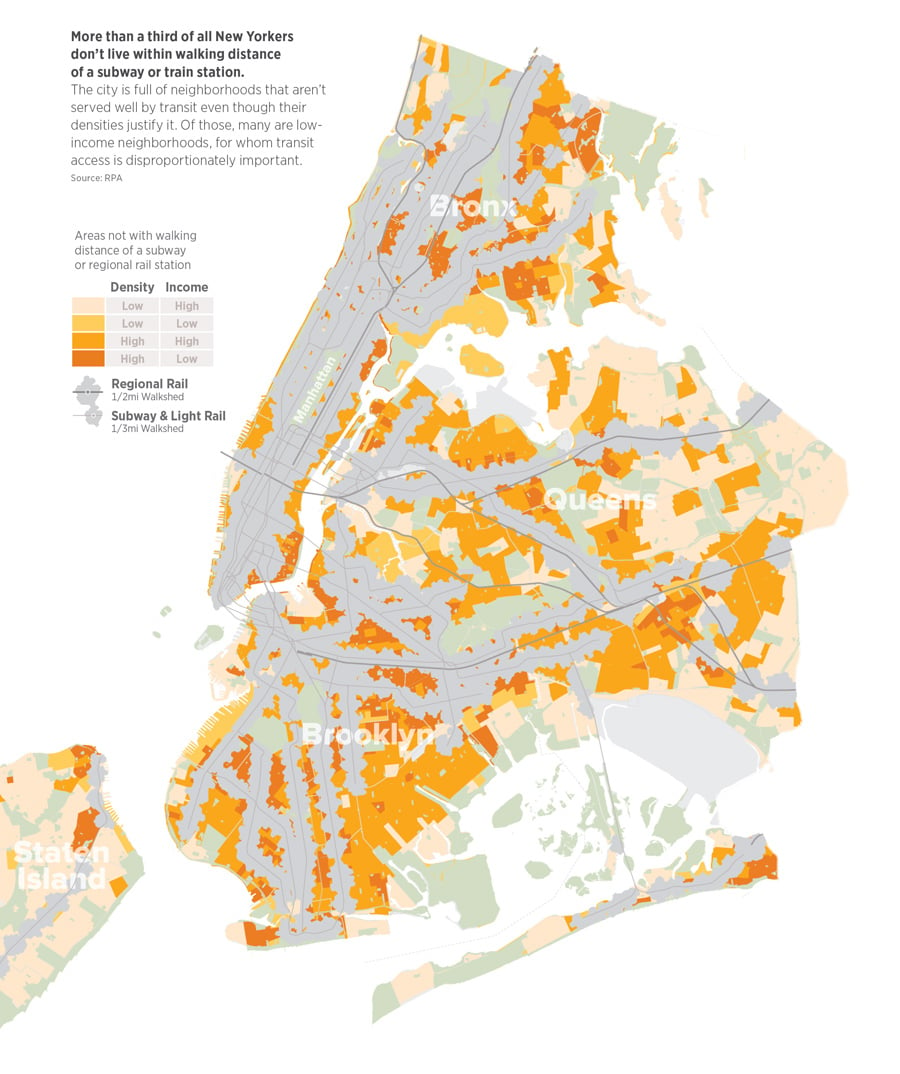
In addition to its data crunching, the RPA conducted more than 200 meetings with 4,000 locals over several years. Wright cited a close collaboration with many grassroots organizations as being a key part of formulating the plan; such groups “collectively…represent more than 50,000 low-income people and people of color throughout the region,” according to the RPA. Seen here: distance to subway stations in New York City. Courtesy RPA
The Fourth Regional Plan is ambitious by design. It aims to “reset the vision for the region,” said Wright. While the RPA president admitted its schemes were optimistic, “we feel we have recommendations that will change the dial in each area”—specifically, public health, equity, prosperity, and sustainability. Though he added, “we have to be willing to confront [those challenges] directly.” And while the timeframe for the Plan’s implementation is long, the urgency is real. According to Wright, if the region doesn’t harness its current prosperity to lay the foundation for future prosperity, then its cycle of growth will be broken, leaving future generations to pick up the pieces.
The full plan is available here.
You may also enjoy “AECOM and Van Alen Institute Reveal Urban SOS 2017 Finalists.”





